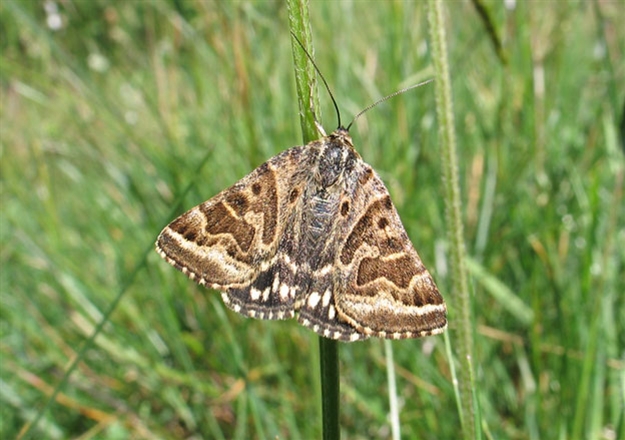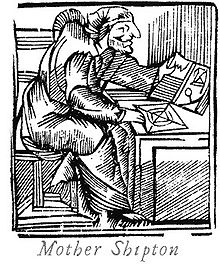
I often wondered why the moth was called this. The apparent picture on the wing of Callistege mi (also known as Euclidia mi) like an old hag’s face, was pointed out to me, but I didn’t know who it was named after until I came across a little book one summer while sorting out my parents’ house. It seems she was born a deformed girl named Ursula in Knaresborough, Yorkshire in 1488; ‘The prodigious Physiognomy of the Child; great goggling eyes, very sharp and fiery, a Nose of unproportionable length, having in it many crooks and turnings, adorned with great Pimples, which like vapours of brimstone gave such a lustre in the night, that her Nurse needed no other Candle to dress her by.’ And maybe this is the origin of our traditional Halloween witch with the crooked nose and warts.
 Even during her childhood she was credited with being able to foretell the future and of having revenge on those who dared taunt her by causing horns to grow on their head and other horrors. Nonetheless she managed to get a husband – Toby Shipton, a carpenter (some say she used a potion to trick him) and she established a long and celebrated career as a sooth-sayer and crime solver.
Even during her childhood she was credited with being able to foretell the future and of having revenge on those who dared taunt her by causing horns to grow on their head and other horrors. Nonetheless she managed to get a husband – Toby Shipton, a carpenter (some say she used a potion to trick him) and she established a long and celebrated career as a sooth-sayer and crime solver.
There are many weird and ridiculous stories related in books published about her in the sixteenth, seventeenth and eighteenth century – each author apparently adding their own bit to the story, so that she was said to have predicted the great plague and fire of London (actually she said a big trouble would hit London – fairly likely in some way or other!) but also the coming of steam engines or aeroplanes and the telegraph.
There were people like this in most towns and villages, known as ‘cunning’ people or white witches. They were accorded great respect and valued in the community. It’s nice to know that disability or disfigurement did not always make for a life of misery in times past, as we might have expected.
Jan Miller.
From; Mother Shipton’s Prophecies, the Earliest Published Editions of 1641, 1684 and 1686. Pub. George Mann ISBN 0-7041-0294-3